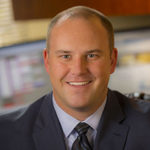I have a torn ACL. Now what?
 By Dr. Joel Hein, OSMS physician owner and board-certified orthopedic surgeon
By Dr. Joel Hein, OSMS physician owner and board-certified orthopedic surgeon
Dr. Joel Hein is a board-certified orthopedic surgeon and OSMS physician owner. He is seeing patients at our Green Bay, Fox Valley and Marinette clinics. Schedule an appointment with him here.
The phrase “torn ACL” is a common injury among youth athletes and active adults alike. But what is less commonly known is that there are actually many to surgically reconstruct the ACL. At OSMS, we create a customized treatment plan for every patient we see.
What is the ACL?
The anterior cruciate ligament, or ACL, is one of the four ligaments in the knee. It crosses diagonally through the knee joint and helps prevent the lower leg bone from sliding in front of the upper leg bone. It also plays a crucial role in providing rotational knee stability, for example, when you pivot or change direction quickly.
When you tear your ACL, an orthopedic physician will look at many factors to determine if surgery is necessary, including:
- Your activity level. We often recommend surgery for competitive athletes, active adults, or those who have jobs that require pivoting or heavy manual work
- Your age
- Your functional stability or the severity of the injury
If surgery is determined to be the best treatment option, there are four ways the ACL can be reconstructed.
- Patellar Tendon Autograft
An autograft surgery uses tissues from your own body to repair the ACL. In this type of autograft, a portion of the patellar tendon – located at the front of the knee with bone from the patella and fibia – is used to reconstruct the ACL.
The potential side effects of using a patellar tendon autograft include:
- Postoperative pain behind the kneecap
- Pain with kneeling
- Hamstring Autograft
A hamstring autograft ACL reconstruction uses the semitendinosus hamstring tendon, which is located on the inner side of the knee. Sometimes a second tendon, the gracilis, is also used. The potential advantages of the hamstring autograph include:
- Fewer issues with pain at the front of the knee post-surgery
- A smaller incision is needed
- A quicker recovery
- Quadriceps Tendon Autograft
This third type of autograft is typically used for patients who have had a previous ACL reconstruction surgery that needs to be repaired. Part of the quadriceps tendon is taken to repair the ACL.
- Allograft
An allograft uses tissues from a donor body, or cadaver, to reconstruct the ACL. Since the tissue from a patient’s own body isn’t used, one of the advantages of this method is that patients typically experience less post-operative pain, and the surgery and recovery tend to be shorter.
Speak with an OSMS physician to ensure that you are taking the right steps to make sure your ACL heals correctly.
If you believe you may be suffering from an ACL tear or injury, schedule an appointment at OSMS here or visit our walk-in Acute Injury Clinic, open Monday-Friday from 8 a.m. – 5 p.m.








